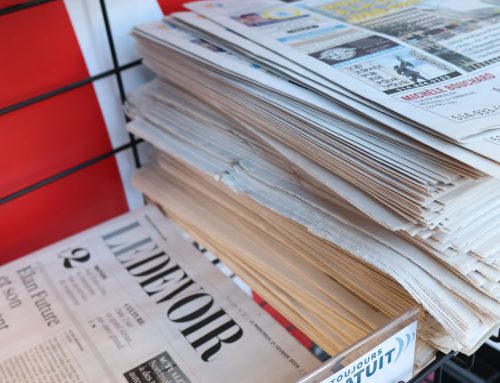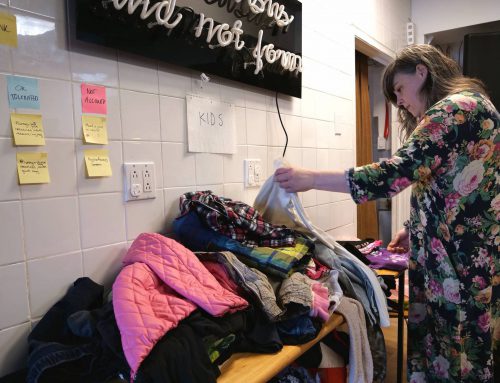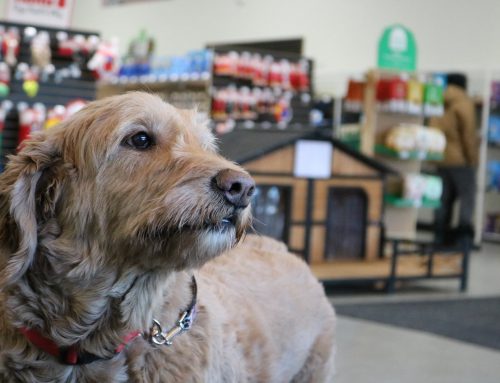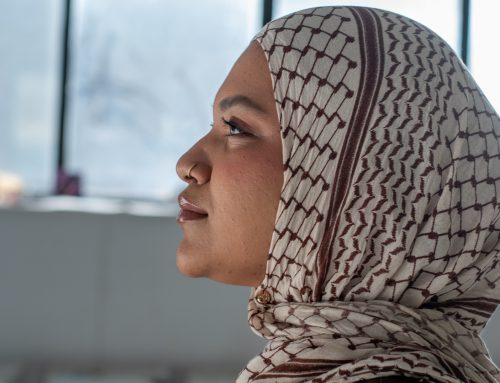BY Bryannna Frankel & Sacha Obas
“We should have more parks for the kids, more green areas,” says Harold Nau, a father of two six-year-old girls. He lives in Park-Extension where the nearest park, Park Liege, is 500 meters from Highway 40 and not in the best condition.
“They have to do something, to clean it up and fix the playground for the kids,” Nau says.
The playground is dirty and rusty according to Nau. When he moved to the neighbourhood, 17 years ago, he remembers everyone going to Liege Park. Now it is often empty.
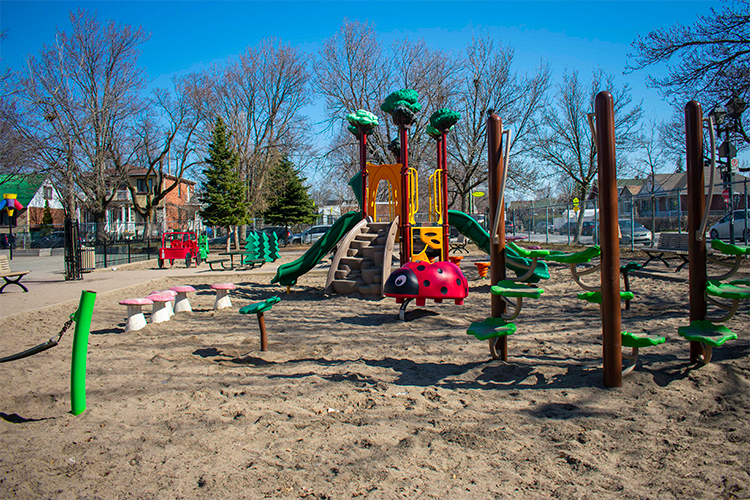
No children are playing in Liege Park, April 2 2021. It is the only children’s playground in Park Extension, located on Liege O in between Avenue Stuart and Avenue Wiseman. Photo by Bryanna Frankel.
Nau lives in a two bedroom apartment and has limited space to play with his girls. He feels it is unsafe for them to play in front of the building, so he drives to parks in Laval and Mount-Royal.
He’s not the only parent looking for more green spaces for his children. And some neighbourhoods struggling with a lack of recreational spaces are looking to the city to convert existing spaces into useful public areas.
A neighborhood community group wants the city to stop dumping snow in a hidden gigantic natural habitat. Video by Sacha Obas.
The Greater Montreal Area has the potential to create more green spaces in 12 golf courses that have permanently closed since 2010.
The location of the 12 closed golf courses in the Greater Metropolitan Area. Media by Bryanna Frankel.
The closed golf courses combined area three times the size of Mount-Royal Park. Municipalities cannot open these green spaces to the public because they are now owned by private developers. However, the developers cannot build on the land because the golf courses are designated for recreational use.
According to Quebec’s law on Respecting Land and Use Planning Development, mayors have the power to determine and change the zoning of land in their municipality, meaning they have the power to restrict residential or commercial development on green spaces.
“I moved to Quebec at 10 years old,” says Ruba Ghazal, Member of the National Assembly of Quebec for the Mercier district. “I lived in Saint-Laurent next to a park. One of the best summers of my life. I loved it.”
Ghazal has publicly asked the Minister of Municipal Affairs and Housing, Andrée Laforest, to stop allowing zoning changes on golf courses throughout Quebec. Laforest hasn’t responded but is working on a development strategy that is to be published in early 2022.
“I suggest that mayors stand their ground, to continue to put pressure and to see other members of the assembly, hopefully from other parties,” Ghazal says.
Ghazal wants mayors to have an opportunity to convert their golf courses into green spaces before developers pressure them into changing the zoning. But she says they face roadblocks in taking control of the land.
“Mayors don’t have the tools to own the land,” Ghazal says. “They will have to pay double or triple the price of the market value because of expropriation law. It is an old law and we need to put a new coat of paint to refresh it.”
Quebec’s 1973 Expropriation Act states a municipality can acquire private property if it pays compensation to the owner. However, municipalities must pay more than just the land’s market value. They have to pay the value of the land plus the value of any planned development project.
[slide-anything id=”5139″]
“We will not go through expropriation, because $126 million, forget it,” says Mayor of Rosemère Eric Westram. “For the next 20 years, we’re going to pay $1000 per resident through taxes. Yes, it’s nice to keep that land in the middle of our town, but can we afford it?”
The old Rosemère Golf Course is 90 per cent a recreational zone and 10 per cent a residential zone, allowing a four-floor building to be constructed. The zoning was changed in 2015 in hopes of saving the golf course from bankruptcy.
The owners of the Rosemère Golf Club bought Blainville’s Fontainebleau Golf Club in 2018 and changed the name to make it the new Rosemère Golf Club.
A timeline of the Rosemère Golf Club. Media by Bryanna Frankel
The city of Rosemère is conducting an ecological value test on the golf course to determine how much of the land must be protected based on wildlife and flora.
“The Golf Course had green grass for 100 years,” Westram says. “But you know how it got that way, there are pesticides in there.”
Westram explains he will double the percentage of the protected land determined by the results of the ecological test, which will be available by the end of the summer. If 30 per cent must be protected, then he will maintain a recreational zone for 60 per cent of the old golf course. The remaining land will be developed.
[slide-anything id=”5134″]
“In my position, I have to balance all kinds of things,” Westram says. “I can’t just be pro-environment. I have to make sure this city stays competitive.”
For the past three and a half years, Westram and his team have been working on a new residential and commercial development plan slated to unfold over the next decade. That includes residences for the elderly, as there are currently none in Rosemère. The mayor says this ensures elderly Rosemèrites don’t have to move to other municipalities.
“Fifteen years ago we used to be 15,000 people,” Westram says. “Now we’re down to 13,800.”
Westram speculates it is the younger generation that leaves the family home and cannot afford to move back. He plans on limiting development on the land.
“I have an ownership in this community,” Westram says. “I will never allow, as long as I am here in this position, to have a huge development on this piece of land.”
The private owners presented a development project earlier this year that included 14,820 apartment units over the entire 60 acres. Westram rejected the project as being too dense.
The municipality was paying $15,000 annually to allow residents access to the land during the winter. The owners have blocked access to the land as of winter 2021 due to on-going disagreements.
Green Rosemère, a non-profit organization, has started a petition asking for 100 per cent of the golf course to be protected.
“There is a lack of green spaces everywhere,” says co-founding member of Green Rosemère, Julie Maurais. “You saw it during the pandemic, there are crowds everywhere. This past year has shown us how important this green space close to us is.”
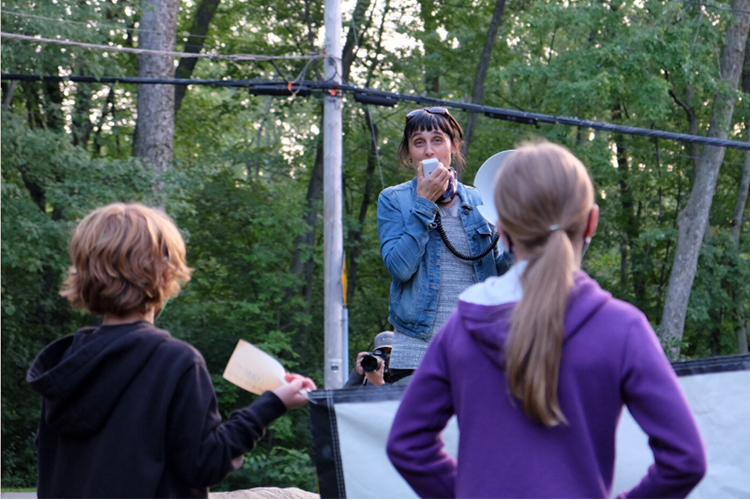
Julie Maurais talking during a protest against the mayor’s urban plan. September, 14 2020. Photo courtesy of rosemerevert.ca.
The Montreal Metropolitan Area (MMA) has an objective to protect 17 per cent of its green spaces. It gives grants to municipalities that have an ecological environment to conserve. The ecological value test will determine if Rosemère has access to financial support.
Green Rosemère conducted its own ecological value test through the Suzuki foundation. The test found that the land should be high priority for protection, citing how it works as a natural heat sink, reducing temperatures in the area.
The report suggests creating a regional park where surrounding municipalities contribute to the development and maintenance cost allowing them to have access to the land. They envision the park will attract local markets and businesses that would bring additional money to the municipality.
“If I was a normal citizen, I would have signed that petition,” Westram says. “I’ve always dreamt of having a Central Park in Rosemère.”
Green Rosemère suggests using the parking lots of Place Rosemère, Galerie Mille Îles, and Quatre-Coin instead of the golf course to build retirement homes and affordable condos. They suggest constructing underground parking, ground floor commercial space and communal workspaces on the lower levels of the buildings.

An aerial view of the Old Rosemère Golf Course. The parking lots of Place Rosemère, Galerie Mille Îles, and Quatre-Coin are located south of the golf course. Photo courtesy of Google Maps.
“We’re in the 21st century,” Maurais says. “We have major climate change issues and we need to start adapting as a municipality. I think we need a development worthy of the 21st century that gives back to the community.”
Nau isn’t waiting for the city to create better spaces for his girls. He is planning on moving next year, hopefully to a neighbourhood with clean, accessible parks near his work at the Jewish General Hospital.

